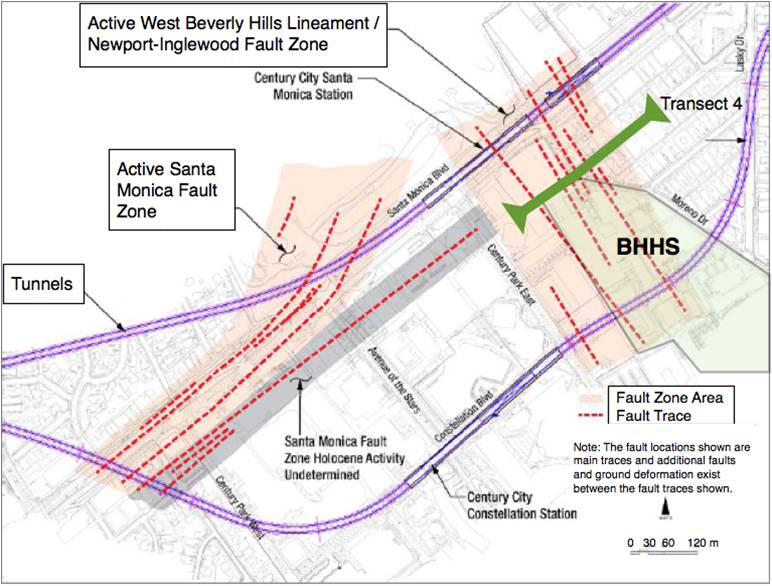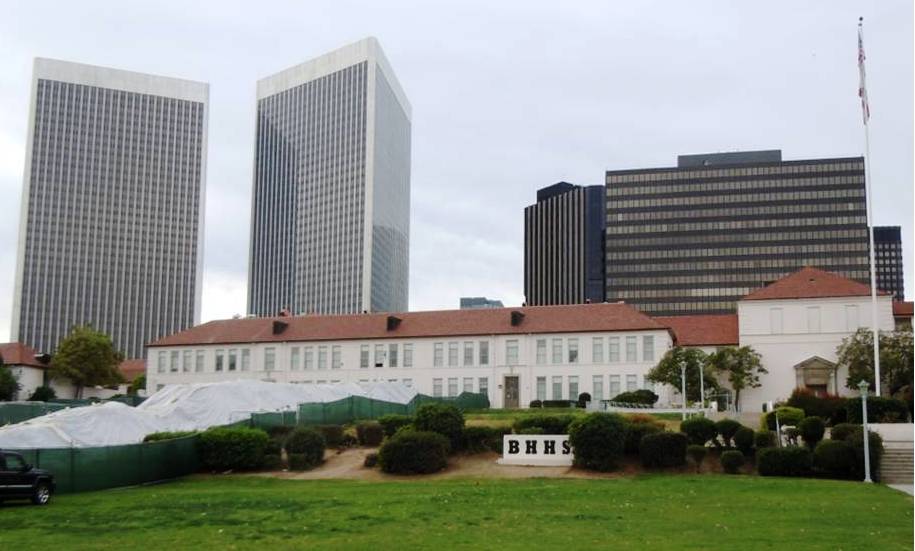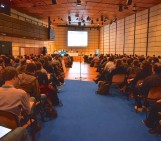A line on a map is important. In the Beverly Hills region of Los Angeles a series of mapped fault lines are now the cause of a major controversy. Communities have been alarmed, money has been lost and legal proceedings are ongoing.
It started in 1992. James Dolan and Kerry Sieh, two earthquake geologists at the California Institute of Technology, published a map in a field trip guidebook about the Los Angeles Basin. The map in question included suggestions of two potentially active earthquake faults in the north of the basin – the West Beverly Hills Lineament and the Santa Monica Fault – though neither of them had been confirmed by detailed study.
In the two decades since the situation has slowly spiralled out of control. Dolan and Sieh’s original map has been included in a whole series of academic papers and in 2005 the faults were added –as dotted lines – to an official map from the United States Geological Survey. Then, in 2010, the state published a map in which it labelled both faults as ‘active’.

Map released by the Los Angeles metro company at the press conference in 2011. Red lines show suggested active faults and BHHS is the Beverly Hills high school.
Eldon Gath, from Earth Consultants International, has been reflecting on the escalating situation at the EGU General Assembly 2014. “What was a hypothesis,” explains Gath, “became a fact without any new information. Every subsequent map has reproduced these faults without even questioning whether they are right.”
These careless assumptions have now come back to haunt the people of Beverly Hills. Metro, the Los Angeles underground company, are proposing a new ‘Subway to the Sea’, an underground line from Los Angeles to the coast that would pass directly through Beverly Hills and Santa Monica. In 2011 they held a press conference to announce the results of some geotechnical surveys they had commissioned and duly claimed that a whole series of active earthquake faults ran through the proposed train route and, crucially, right under the local Beverly Hills high school. The metro company also proposed a new route for their underground line to avoid some of the faults.
“It came as a big shock to everyone,” says Gath, “this was dropped on the local community at a press conference and there was no advance notice that the map was going to be released. The high school found out about this fault map when the Los Angeles Times called them. That’s just not good public relations.”
Immediately after the press conference the school decided to launch its own investigations. It commissioned new boreholes and a trench that stretched from the front door of the school right across the proposed location of the fault. If the fault was there, then the trench would reveal layers of sediment that had been offset in previous earthquakes. But nothing was found; 50,000 year old sediments were entirely undisturbed. At a nearby location one fault was found, but the sediment ages revealed that it hadn’t moved for at least the last 200,000 years. After all the disruption, it appears that the faults don’t even exist.

Trench excavated in front of the school. No evidence of past earthquakes was found in the trench. (Credit: Eldon Gath)
To date the school has spent an estimated three million dollars on these studies and at least three other property owners in the vicinity have commissioned similar work. “It’s unfortunate that they had to spend so much money,” says Gath, “but the lawyers are now feasting at the trough.” Multiple lawsuits have been filed and a couple of cases have already been successful.
But why were these mistakes allowed to happen? “I think there was a paradigm-driven interpretation,” explains Gath. In the original work done by the metro company, “every kind of mismatch was interpreted as a fault. It was a fault-driven interpretation. But they didn’t pay any attention at all to the sediment ages.” It is also alleged that competing financial and political interests have played a role.
The current situation can hardly be blamed on Dolan and Sieh’s original map, but their initial tentativeness has been lost somewhere in the Chinese-whispers-style translation.
In the future, we must make sure that someone takes responsibility for the faults.
By Tim Middleton, University of Oxford
Reference:
Gath et al., 2014: The West Beverly Hills Lineament and Beverly Hills High School: Ethical Issues in Geo-Hazard Communication. Geophysical Research Abstracts, Vol. 16, EGU2014-1131-1




